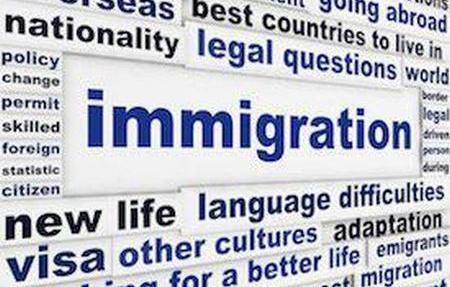Adjusting Your Status: When and How
 When a non-citizen wants to visit the United States, they must first obtain immigration status by getting a visa. Over time, however, one’s status may change from non-immigrant to immigrant. A visitor might have entered the country as a student, for example, and then wanted to marry a U.S. citizen. Visas differ for these situations, and in light of this the immigrant would need to officially adjust immigration status before plans could go forward. Very often, it is helpful to hire a good immigration attorney to speed up the process.
When a non-citizen wants to visit the United States, they must first obtain immigration status by getting a visa. Over time, however, one’s status may change from non-immigrant to immigrant. A visitor might have entered the country as a student, for example, and then wanted to marry a U.S. citizen. Visas differ for these situations, and in light of this the immigrant would need to officially adjust immigration status before plans could go forward. Very often, it is helpful to hire a good immigration attorney to speed up the process.
Adjustment of Status
An actual adjustment of status is only for people inside the United States already. If a visitor wishes to enter the United States as a permanent resident instead of adjusting from within the country, they would file the application through the nearest consulate or embassy.
There are five main eligibility requirements that must be met in order to be able to adjust status. The requirements are as follows:
- The individual must be present in the United States, as previously stated;
- The individual must have an approved immigration petition (either based on relationship to a U.S. citizen, or with an employer’s assistance and approval);
- Some nationalities are subject to quotas. For those nationalities, the applicant’s priority date must be before the cut-off date for the applicable immigration category. A priority date is the date of the initial immigration petition, and the cut-off date is the date on which the first person in that category will be denied status. For example, if a person from China (which is a country subject to quotas) has a priority date of 4/1/14, but the cut-off date is 5/1/14, they may go ahead and apply to adjust status. If their priority date were 6/1/14, they would not be permitted, because the quota would already be filled by the time it was their turn.
- The individual must not have entered the United States illegally. The requirement states that a potential immigrant must be “inspected and admitted or paroled into the United States."
- There must not have been a change in the individual’s circumstances between the initial application and the application for adjustment of status. For example, if an individual applies for a green card based on a sibling’s U.S. citizenship, and then the sibling suddenly passes away, the applicant no longer has the right to apply for that green card (because the U.S. citizen on whom the applicant was basing the claim is now deceased).
After Determination of Eligibility
Once the applicant is deemed eligible to apply for the adjustment, the process is fairly similar to those used when applying for other visas. Biometrics are required, and in some cases, an interview with a consular officer. The final decision is usually received by mail, and the day that the decision was approved will usually be the date on which the permanent residency will be said to have begun for legal purposes.
Contact a Chicagoland immigration Attorney Today
The process of adjusting your status can be complex and difficult to navigate without the assistance of an experienced attorney. The legal professionals at Mevorah & Giglio Law Offices in DuPage County can help. Contact our experienced Chicagoland immigration lawyers for a free consultation today.
 English,
English,
 Spanish,
Spanish,
 Polish,
Polish,
 Urdu
Urdu













 Make a Payment
Make a Payment



